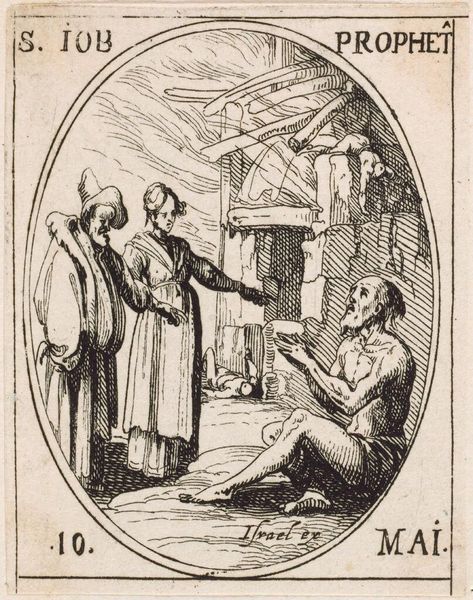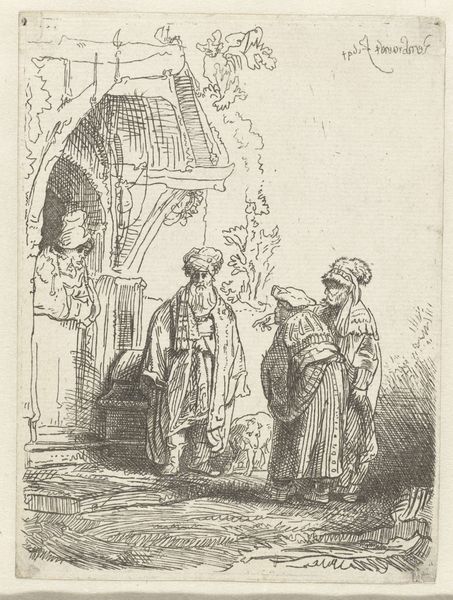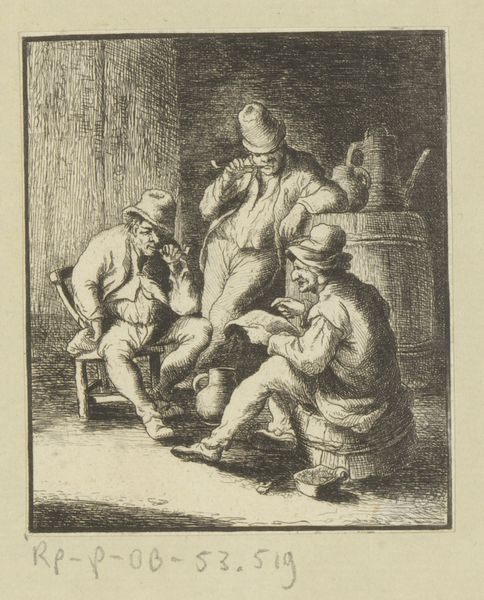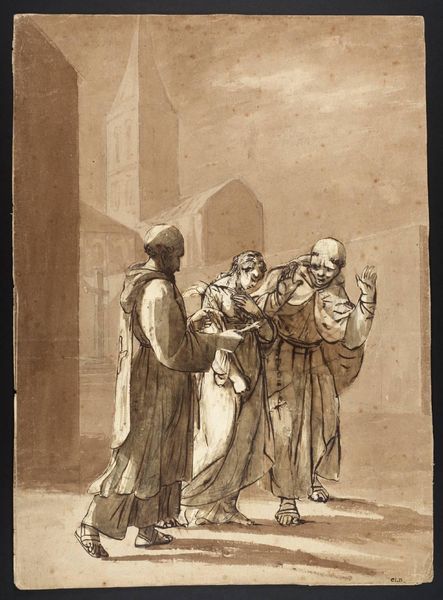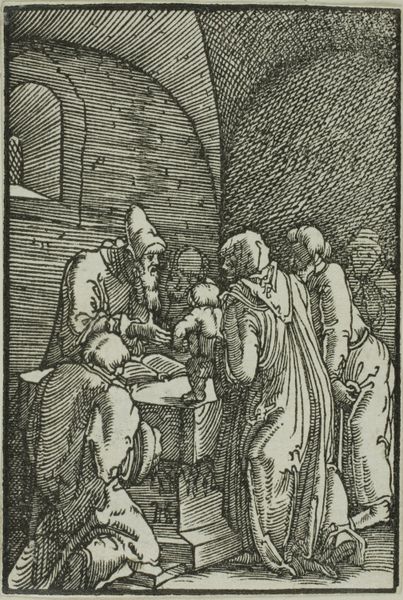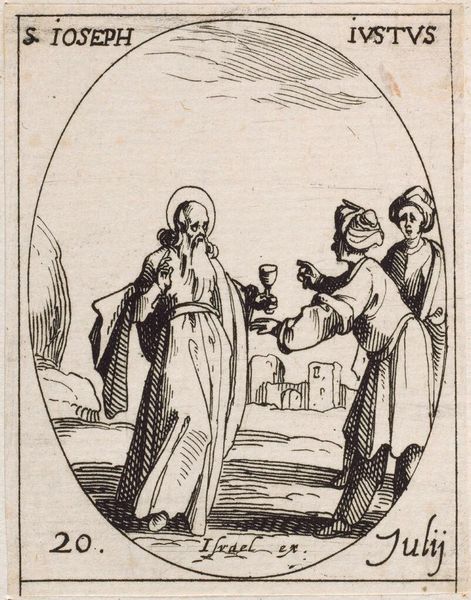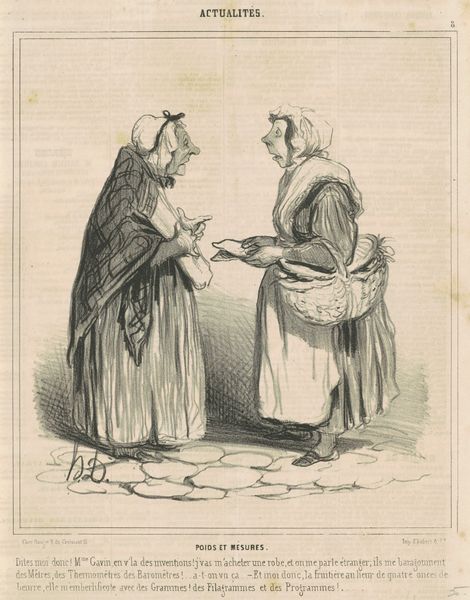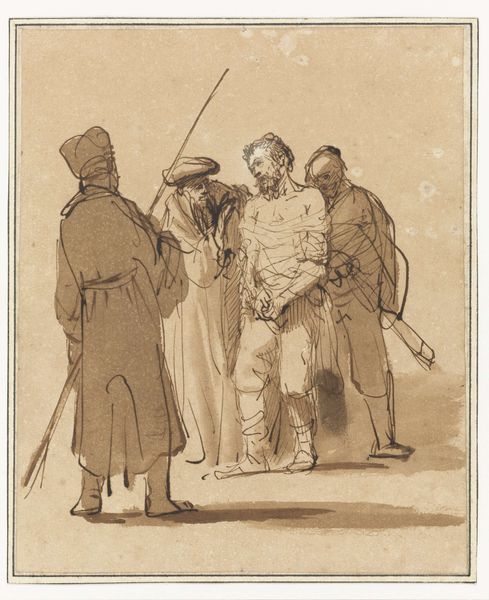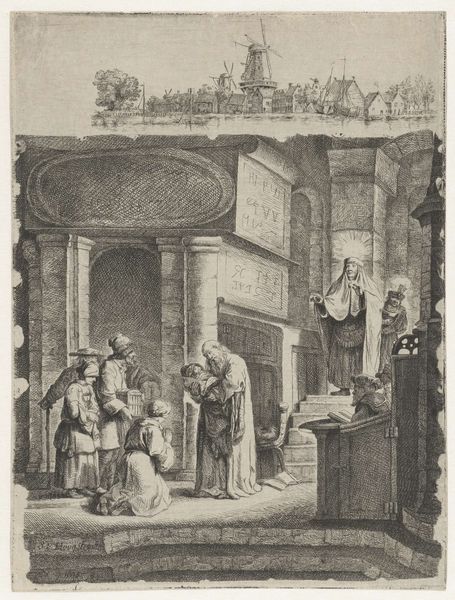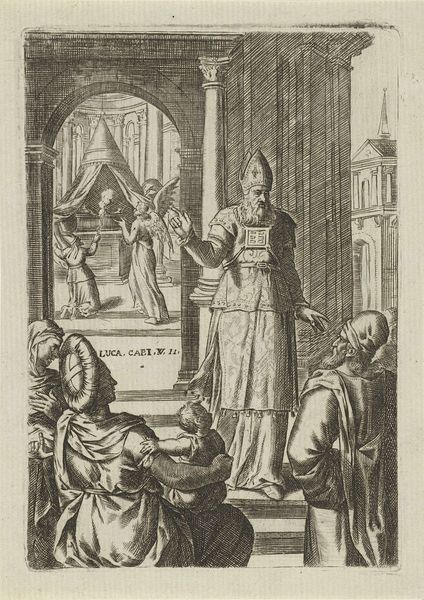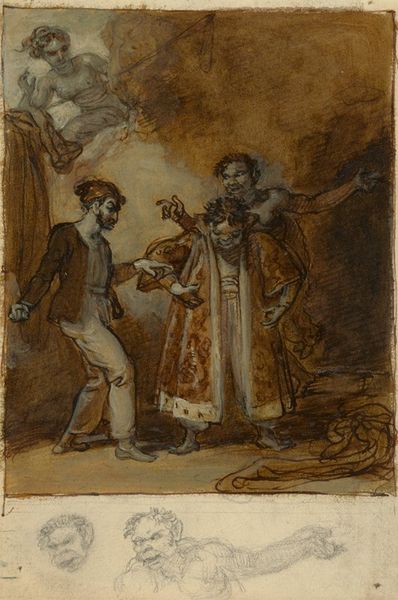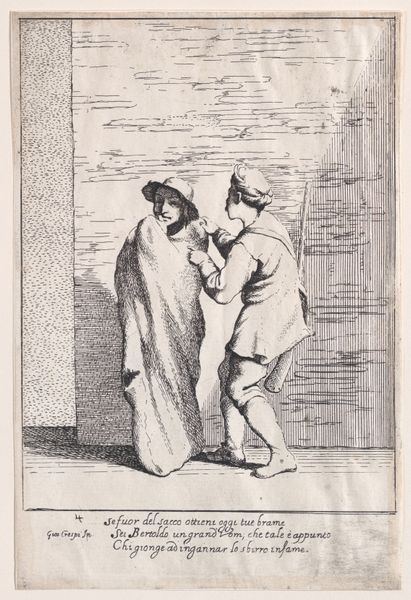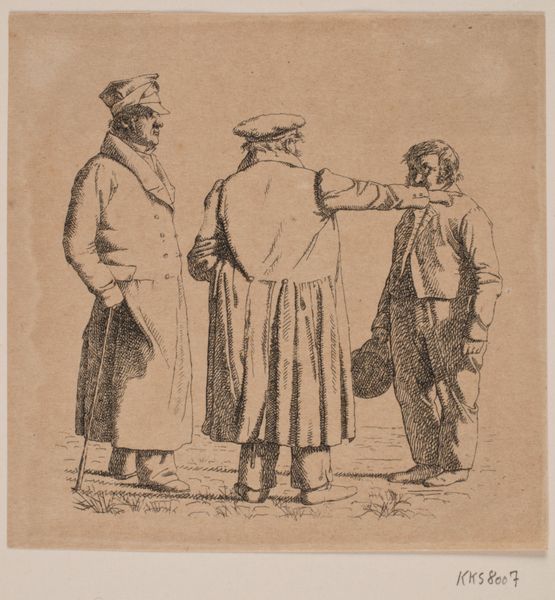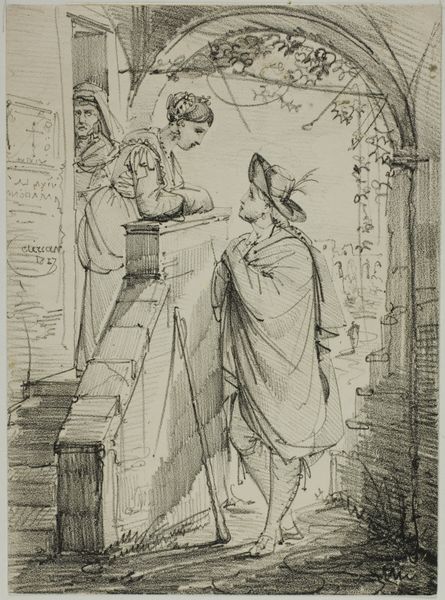
Kompositionsstudie med tre stående mænd på en to-trins trappe 1840s
0:00
0:00
drawing, watercolor
#
portrait
#
drawing
#
figuration
#
watercolor
#
romanticism
#
genre-painting
#
watercolor
Dimensions: 105 mm (height) x 79 mm (width) (bladmaal)
Curator: Here we have a watercolor and drawing titled "Kompositionsstudie med tre stående mænd på en to-trins trappe," or "Compositional Study with Three Standing Men on a Two-Step Staircase," created in the 1840s by Martinus Rørbye. Editor: It has an almost theatrical feel to it. The way the figures are arranged on those steps, and the dramatic use of shadow…it’s captivating. There's a distinct hierarchy presented here, intentional or otherwise. Curator: Rørbye was known for his genre paintings and his focus on depicting everyday life, filtered through the lens of Romanticism. Considering that, these men likely aren't meant to represent specific individuals as much as archetypes within the cultural landscape. Editor: The central figure, in what appears to be a reddish-purple robe and white head covering, certainly commands attention. His gesture is quite expressive, as if he's in mid-speech. What could he represent in terms of the prevailing socio-political dynamic, if anything? Curator: That's a compelling point. While not a formal portrait, the artist is absolutely attentive to details like the variation of dress among these figures. These differences of dress code could communicate status or affiliation. Editor: Indeed, note how the man to his left has his arms crossed, as though guarded. This artistic choice creates immediate tension. It makes me curious about the power dynamic Rørbye attempts to create or mirror. What’s more, they're elevated upon steps. It immediately creates a division, doesn't it? Curator: Absolutely, the placement creates an inherent sense of elevation, perhaps a visual cue related to influence, whether spiritual, intellectual, or otherwise. Consider how contemporary audiences might have responded to this suggestion. The Romantics were very concerned with societal reforms and class distinctions. Editor: Looking at this now, understanding that Rørbye intended to depict something of Romanticism, one wonders, what do these symbols mean now? We can understand hierarchy through the painting, but how does our 21st-century lens of experience shape how the figures, staging, and dramatic use of light impacts our response? It evokes almost an operatic interpretation. Curator: Indeed, considering Rørbye's historical context, his commitment to showing the reality of the period becomes rather touching. Editor: It does cause one to reflect on enduring and universal themes within the staging, creating this shared cultural understanding through his artistry. Thank you.
Comments
No comments
Be the first to comment and join the conversation on the ultimate creative platform.
